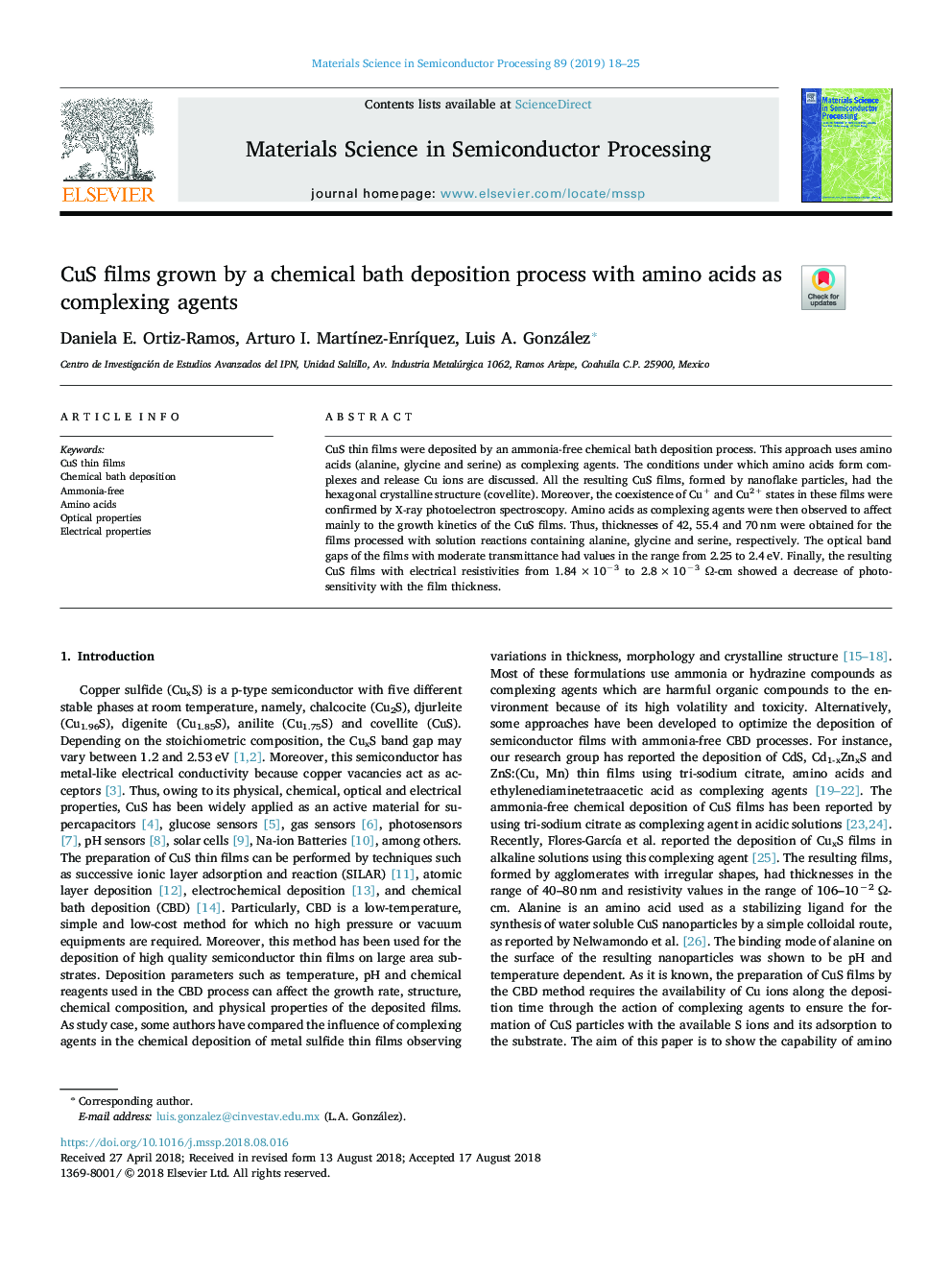| Article ID | Journal | Published Year | Pages | File Type |
|---|---|---|---|---|
| 8954350 | Materials Science in Semiconductor Processing | 2019 | 8 Pages |
Abstract
CuS thin films were deposited by an ammonia-free chemical bath deposition process. This approach uses amino acids (alanine, glycine and serine) as complexing agents. The conditions under which amino acids form complexes and release Cu ions are discussed. All the resulting CuS films, formed by nanoflake particles, had the hexagonal crystalline structure (covellite). Moreover, the coexistence of Cu+ and Cu2+ states in these films were confirmed by X-ray photoelectron spectroscopy. Amino acids as complexing agents were then observed to affect mainly to the growth kinetics of the CuS films. Thus, thicknesses of 42, 55.4 and 70â¯nm were obtained for the films processed with solution reactions containing alanine, glycine and serine, respectively. The optical band gaps of the films with moderate transmittance had values in the range from 2.25 to 2.4â¯eV. Finally, the resulting CuS films with electrical resistivities from 1.84â¯Ãâ¯10â3 to 2.8â¯Ãâ¯10â3 Ω-cm showed a decrease of photosensitivity with the film thickness.
Related Topics
Physical Sciences and Engineering
Engineering
Electrical and Electronic Engineering
Authors
Daniela E. Ortiz-Ramos, Arturo I. MartÃnez-EnrÃquez, Luis A. González,
